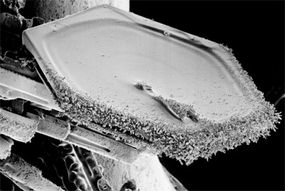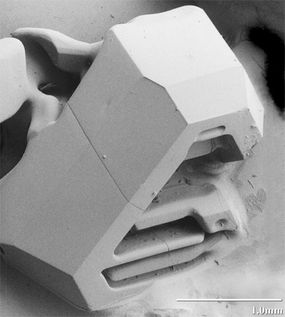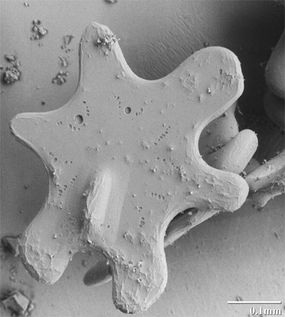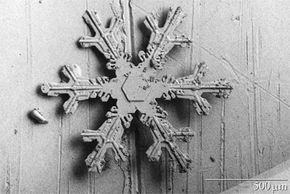The Properties of Snow



To understand how avalanches form, you need to understand the properties of snow crystals. Depending on the temperature, humidity and other atmospheric conditions, snow crystals can have a variety of shapes, but all are generally hexagonal or six-pointed.
In areas that get a lot of snow, the snow on the ground forms a snowpack. The layers within the snowpack have different qualities due to the shapes of the crystals in the layer. For example, six-pointed crystals can interlock more easily than needle-shaped crystals, so they create a steadier layer. On the other hand, when super-cooled water comes into contact with snow crystals in the air, it creates rime. Heavy rime deposits can cause pellet-like snow called graupel, which creates a very unstable layer.
Advertisement
Snowpack layers also have different qualities because of changes that take place once the snow is on the ground. Changes in the weather lead to changes on the snowpack's surface.
- If the top of the snowpack melts and re-freezes, it can form a layer of slick ice.
- If air just above the snowpack reaches the dew point, the snowpack can develop hoar, which is a light, feathery crystal that does not bond well to snow.
- If the top of the snowpack freezes and thaws repeatedly, it can develop clusters of frozen particles with space in between, which creates an unstable surface for the next layer of snow.
Changes within the snow pack take place due to the temperature gradient -- the difference in temperature between the upper and lower layers. The snow near the bottom is relatively warm (close to 0° Celsius/32° Fahrenheit) because of residual heat from the ground. The temperature in the upper layers depends on the temperature of the air. Snowflakes within the snowpack undergo different types of metamorphosis depending on the size of the temperature gradient.
In snowpacks with a high temperature gradient -- a large difference in temperature -- crystals tend to develop facets. The flat surface of a facet cannot bond well to other surfaces. Heavily faceted crystals located deep in the snowpack are called depth hoar and create dangerous instability.
On the other hand, low temperature gradients and consistent sub-freezing temperatures cause rounding, which allows crystals to compress more tightly. The exchange of water vapor during rounding also creates bridges between crystals and parts of crystals, creating a firm, stable snowpack.
Regardless of whether they are the result of temperature gradients, atmospheric conditions during snowfall or melting and refreezing, strong and weak layers of snow make avalanches possible. Next, we'll look at how avalanches form and what can trigger them.
